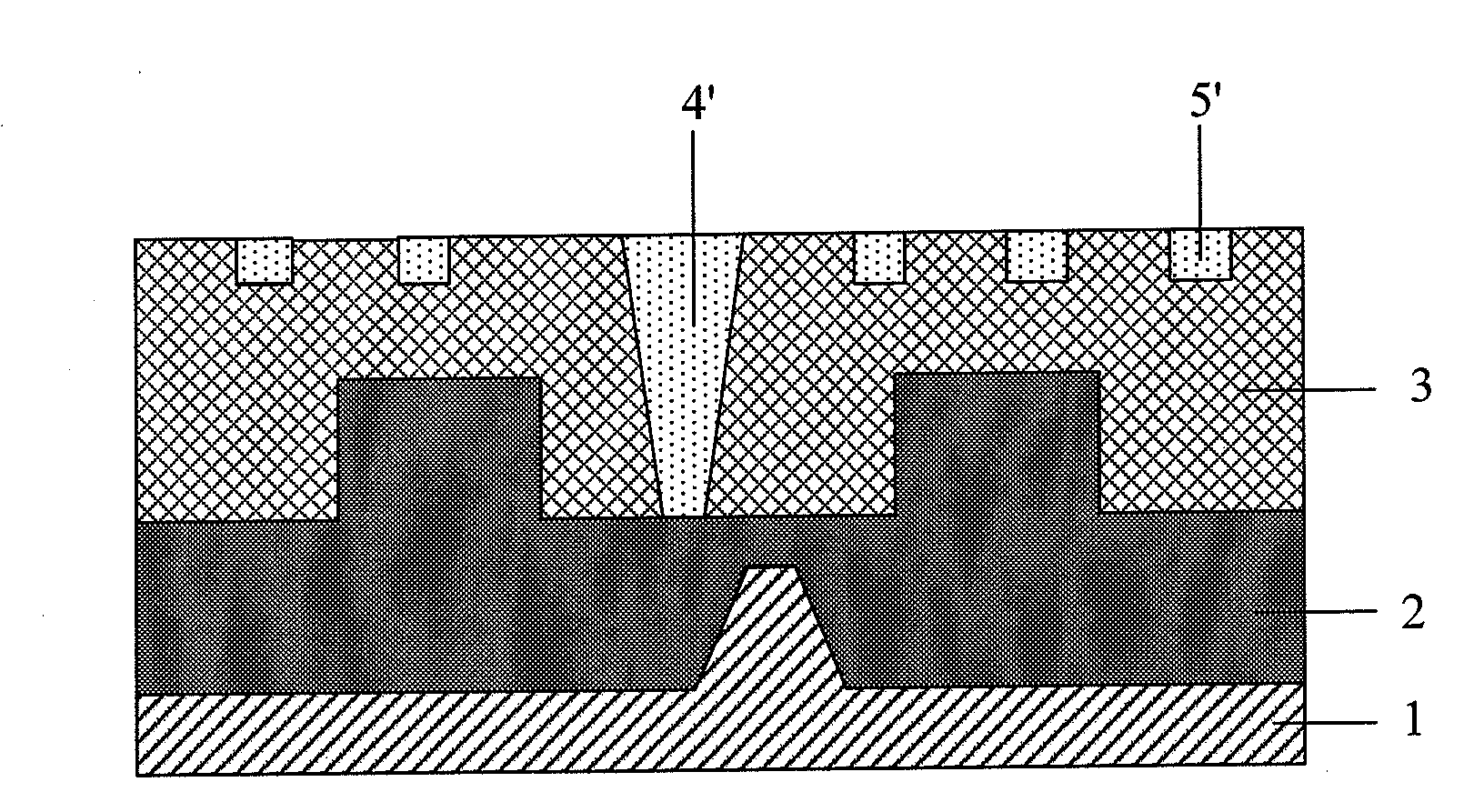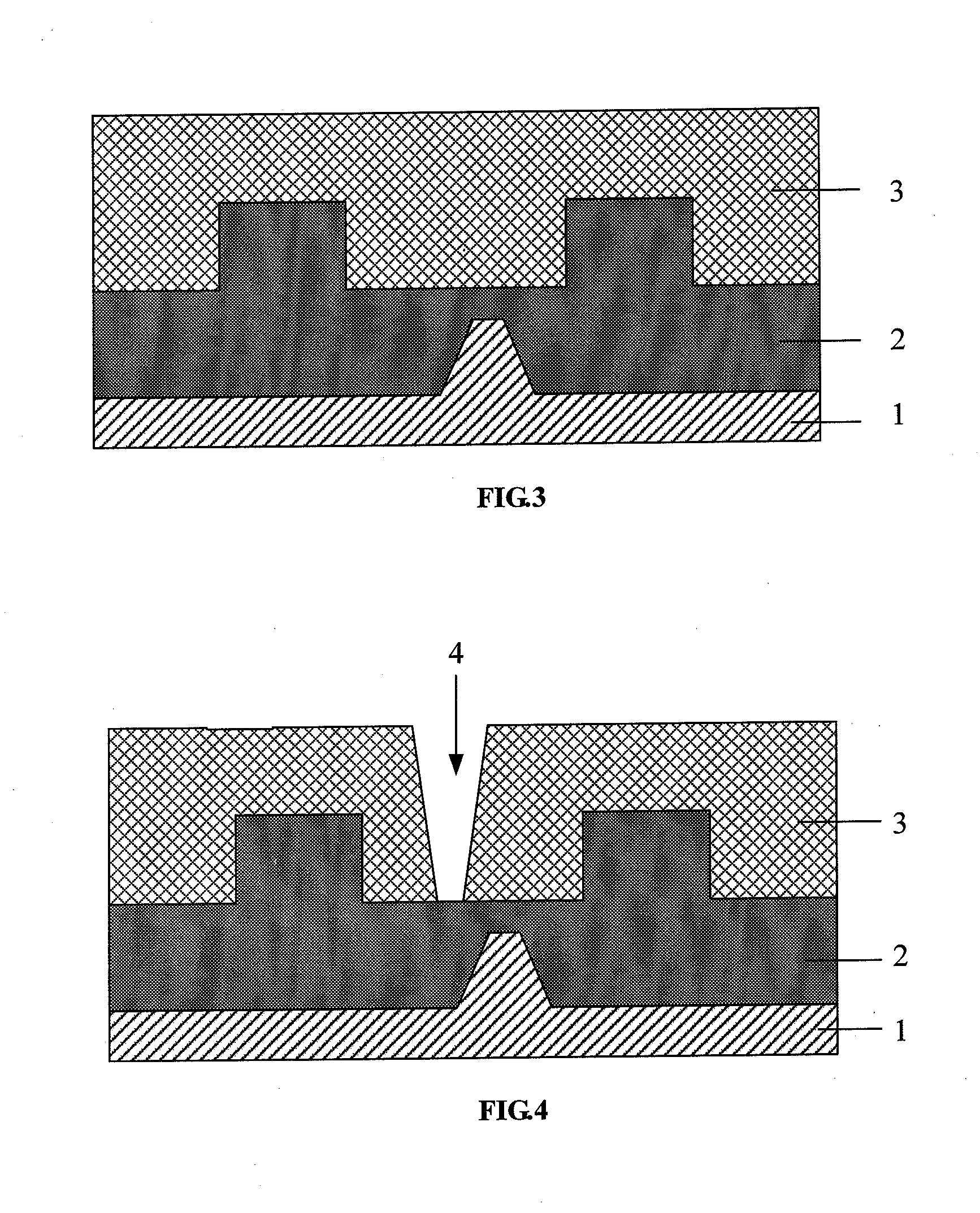Fabrication method for improving surface planarity after tungsten chemical mechanical polishing
- Summary
- Abstract
- Description
- Claims
- Application Information
AI Technical Summary
Benefits of technology
Problems solved by technology
Method used
Image
Examples
Embodiment Construction
[0025]Foregoing objectives, characteristics and advantages of the present invention will be clearer and easier to be understood upon reading the following description of specific embodiments with reference to the accompanying drawings.
[0026]A contact hole layer which locates under a copper interconnection layer is generally formed by tungsten (W), and is generally planarized by using a W-CMP process. Similar to the Cu-CMP process, the surface planarity after W-CMP may be improved by inserting dummy patterns in the layout of the contact hole layer. However, if dummy patterns are formed simultaneously with contact holes by using one photolithography-and-etching process, this will lead to the formation of dummy patterns that have a same depth with that of the contact holes, meaning that the dummy patterns formed will also be through the pre-metal dielectric (PMD) layer, thus creating a high possibility for metal filled in the dummy patterns to contact with gate electrodes and active-ar...
PUM
 Login to View More
Login to View More Abstract
Description
Claims
Application Information
 Login to View More
Login to View More - R&D
- Intellectual Property
- Life Sciences
- Materials
- Tech Scout
- Unparalleled Data Quality
- Higher Quality Content
- 60% Fewer Hallucinations
Browse by: Latest US Patents, China's latest patents, Technical Efficacy Thesaurus, Application Domain, Technology Topic, Popular Technical Reports.
© 2025 PatSnap. All rights reserved.Legal|Privacy policy|Modern Slavery Act Transparency Statement|Sitemap|About US| Contact US: help@patsnap.com



